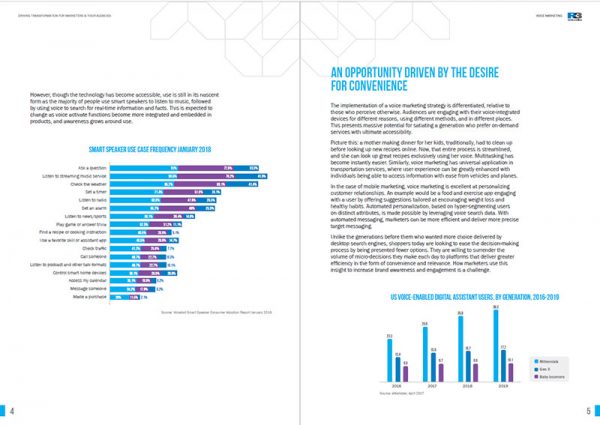Voice marketing uses the application of artificial intelligence to create interfaces with consumers that are entirely digitized. The best example of this is Amazon’s Alexa or Google Home products that are entirely conceived out of the competitive advantage of convenience. As marketing technology advances, adept marketers need to seize the opportunity to incorporate voice marketing as a key tool in their overall digital marketing strategy.
The global smart speaker market was valued at $7.9 billion in 2018 and is forecast to exceed $32 billion in 2023. It is the fastest growing consumer technology of all time, reaching 50% of U.S. population in under five years. According to Nielsen, nearly a quarter of U.S. households own a smart speaker, with 40% owning more than one speaker. Such rapid growth is generally attributed to easy access via entry-level smart speakers like Echo Dot and Google Home Mini. In China, companies have offered generous price discounts for its Tmall Genie smart speaker, leading to massive increases in household penetration in China.
However, though the technology has become accessible, use is still in its nascent form as the majority of people use smart speakers to listen to music, followed by using voice to search for real-time information and facts. This is expected to change as voice activate functions become more integrated and embedded in products, and awareness grows around use.
Content
- Developing a voice marketing strategy
- Utilizing voice: Best practices
- Brands finding success with voice marketing


